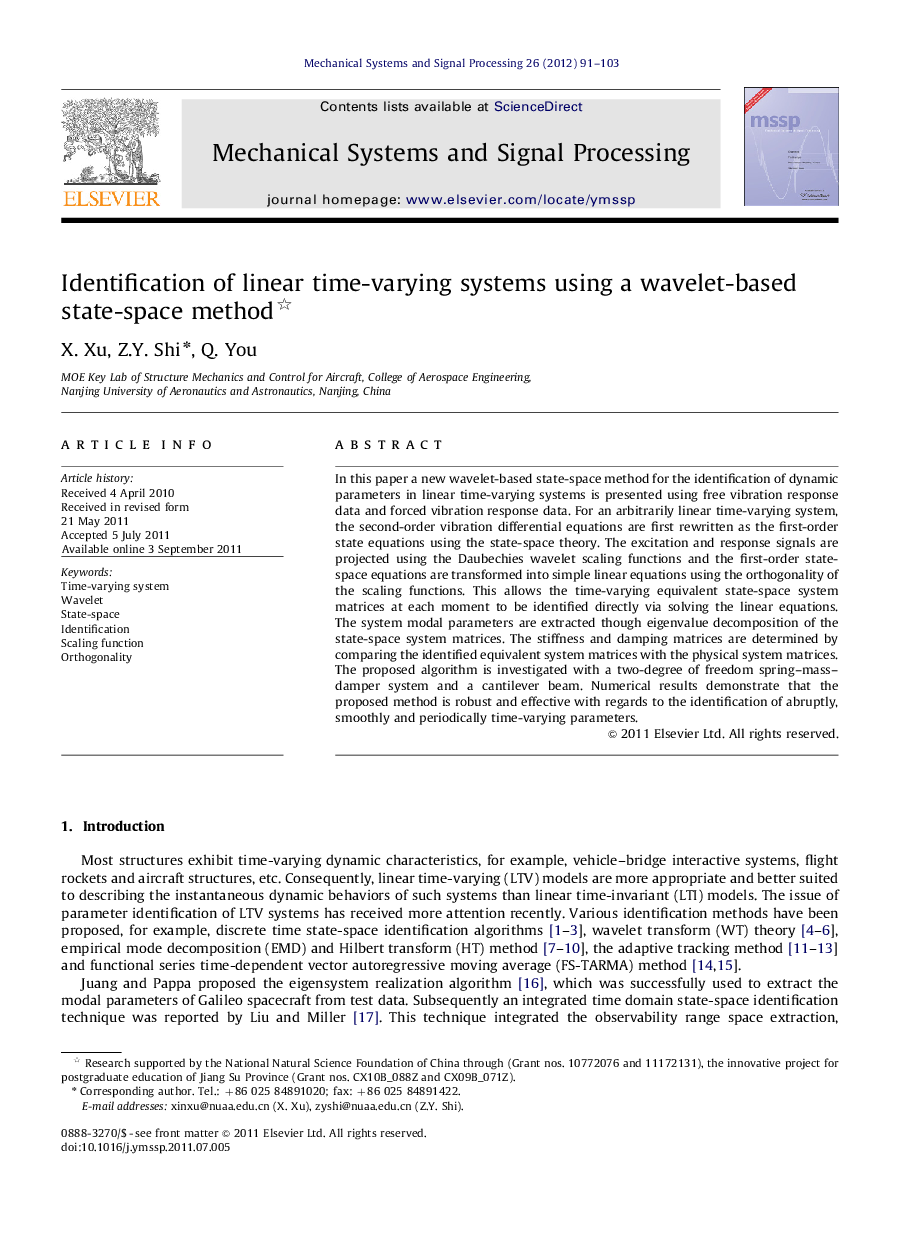| Article ID | Journal | Published Year | Pages | File Type |
|---|---|---|---|---|
| 560696 | Mechanical Systems and Signal Processing | 2012 | 13 Pages |
In this paper a new wavelet-based state-space method for the identification of dynamic parameters in linear time-varying systems is presented using free vibration response data and forced vibration response data. For an arbitrarily linear time-varying system, the second-order vibration differential equations are first rewritten as the first-order state equations using the state-space theory. The excitation and response signals are projected using the Daubechies wavelet scaling functions and the first-order state-space equations are transformed into simple linear equations using the orthogonality of the scaling functions. This allows the time-varying equivalent state-space system matrices at each moment to be identified directly via solving the linear equations. The system modal parameters are extracted though eigenvalue decomposition of the state-space system matrices. The stiffness and damping matrices are determined by comparing the identified equivalent system matrices with the physical system matrices. The proposed algorithm is investigated with a two-degree of freedom spring–mass–damper system and a cantilever beam. Numerical results demonstrate that the proposed method is robust and effective with regards to the identification of abruptly, smoothly and periodically time-varying parameters.
► A wavelet-based state-space method for identification of linear time-varying systems using vibration response data is proposed. ► The first-order state-space equations are transformed into simple linear equations using wavelet method. ► The algorithm avoids the difficulties to calculate the second connection coefficients on wavelet. ► The algorithm significantly reduces the computation time. ► The ability of the algorithm for tracking time-varying parameters is robust and effective.
